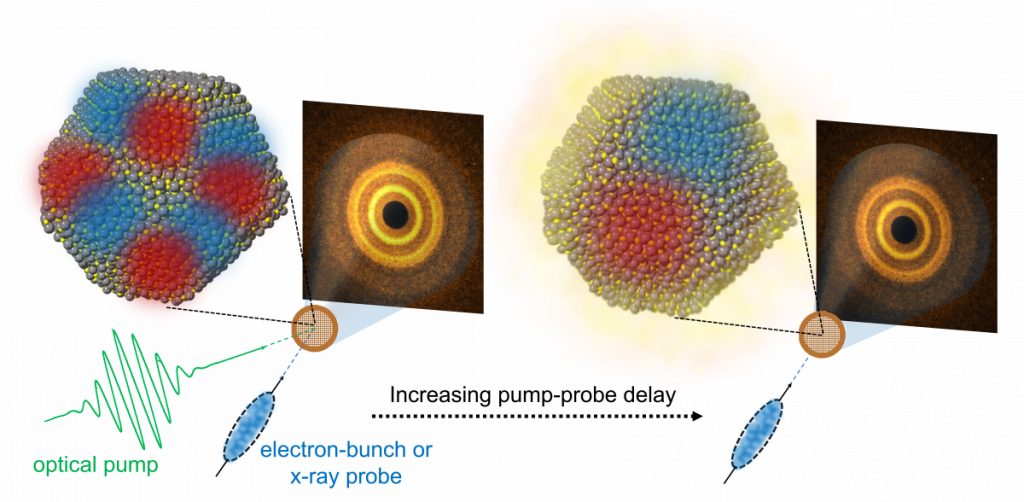We travel to national user facilities at Department of Energy national labs (Argonne Advanced Photon Source and SLAC MeV UED) to run time-resolved structural experiments on unconventional semiconductors such as semiconductor nanocrystals and organic semiconductors.

When a material absorbs light an excited electron is created. This excited electron’s excess energy can be used to do work (emit light or create electricity), but if it is not successfully harnessed it inevitably be lost to heat, which creates new vibrations in the material (thermalization).
Our experiments use very fast (~10-15 s) bursts of light to create stop motion films of a material’s atoms vibrating and moving in response to the the absorption of light energy. First, we use an ultrafast optical pump pulse to create an excited electron and then probe that excited state at varying delay times with an x-ray pulse or electron bunch to create time-dependent diffraction images and track how the structure of a system changes over time. By tracking how different samples prepared in different ways structurally respond to an excited electron, we can correlate their response with the performance of these materials in devices such as solar cells and LED displays to learn how to optimize their performance and efficiency.
Skills learned on this project: This project leans heavily on data analysis. A few days of data from beamline experiments can take many months to process fully. You will learn skills to quickly load, plot, and fit large datasets in Python. You will learn to present such analysis in written and verbal formats. There will also be some opportunities to travel to a national user facility and use some of the most sophisticated spectroscopy equipment available.



